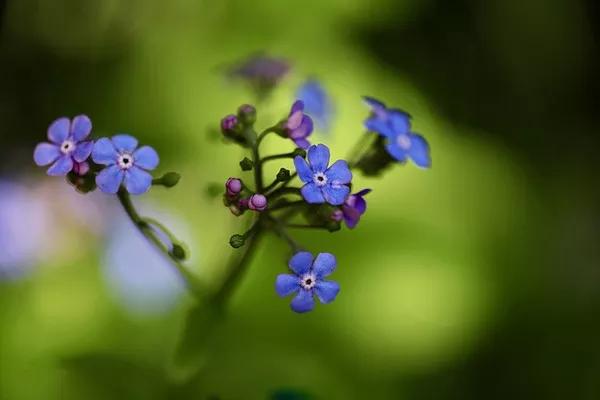Plants, despite their seemingly stationary nature, are far from being immobile entities. While it may be easy to overlook their subtle movements, many plants possess various mechanisms that allow them to interact with their environment, ensuring their survival and reproductive success. Understanding the ways in which plants move is essential not only for appreciating their complexity but also for the broader fields of biology, ecology, and agriculture. In this article, we will explore the remarkable world of plant mobility, delving into the mechanisms and adaptive strategies that enable plants to respond to their surroundings.
Phototropism: Bending Towards the Sun
Plants rely on sunlight for photosynthesis, the process through which they convert light energy into chemical energy. To maximize their exposure to sunlight, many plants exhibit a phenomenon known as phototropism. This fascinating movement involves plants bending and orienting themselves towards the source of light, typically the sun. The underlying mechanism of phototropism is primarily controlled by a hormone called auxin.
Auxin, produced in the tips of the plant stems, migrates to the shaded side of the plant when exposed to light. This accumulation of auxin on one side of the stem results in elongation of cells on the shaded side, causing the stem to bend towards the light source. This allows the plant to capture more sunlight and, in turn, enhance its photosynthetic capabilities.
Gravitropism: Navigating the Pull of Gravity
Another important way in which plants move is through gravitropism. Unlike animals that can actively defy gravity, plants are fixed in the ground and must find creative ways to adapt to this unrelenting force. The primary purpose of gravitropism is to ensure that roots grow down into the soil while the stems and leaves grow upward, optimizing the plant’s nutrient absorption and exposure to sunlight.
Roots exhibit positive gravitropism, meaning they grow in the direction of gravity, while stems and leaves display negative gravitropism, growing in the opposite direction. This movement is achieved through specialized cells containing starch granules, known as statoliths, which settle in response to gravity. As these statoliths move, they signal the plant to adjust its growth accordingly. In roots, auxin redistribution plays a key role, resulting in increased cell elongation on the downward side and bending the root towards gravity.
Thigmotropism: The Art of Touch
Thigmotropism refers to a plant’s response to physical contact or touch. Many plants have developed this intriguing mechanism to adapt and react to their environment. For instance, the sensitive plant (Mimosa pudica) is known for its rapid leaf-folding response when touched. Thigmotropism allows plants to defend against herbivores, seek support, or even find suitable structures for climbing.
The mechanism behind thigmotropism involves the plant’s ability to perceive and transmit signals. Upon contact, cells in the plant release electrical and chemical signals, leading to a change in the plant’s growth patterns. This response can range from curling of tendrils, such as those in climbing plants like vines, to leaf-folding or leaflets closing, as seen in sensitive plants.
Hydrotropism: Chasing Water Sources
Water is an essential resource for plants, and their survival depends on their ability to access it. Hydrotropism is the plant’s response to water availability, which allows them to grow their roots toward water sources. To navigate towards moisture, plants sense gradients in water potential, moving their roots away from dry areas and towards moist substrates.
Hydrotropism primarily depends on the differential expansion of cells in the root tip, guided by the movement of water from areas of lower water potential to those with higher potential. This ensures that the plant’s roots actively seek out the most favorable locations for water uptake.
Nastic Movements: Rapid Responses to Stimuli
Plants are not limited to slow, gradual movements. Some exhibit rapid and reversible responses to specific environmental cues in a phenomenon known as nastic movements. These movements do not involve growth but rather result from changes in turgor pressure within cells.
For example, the venus flytrap (Dionaea muscipula) exhibits a rapid nastic movement by closing its hinged leaves when triggered by a touch from an insect. The closure of the leaves traps the prey for digestion, showcasing how plants can employ swift, decisive responses to their advantage.
Circadian Rhythms: Timing Is Everything
Just as animals have internal clocks that regulate their daily activities, many plants exhibit circadian rhythms that dictate their movements and physiological functions. Circadian rhythms are endogenous, 24-hour biological cycles that respond to light and temperature variations.
Plants use circadian rhythms to time their movements, such as the opening and closing of flowers. These rhythms ensure that plants are at their most receptive state when pollinators are active and ready for fertilization. Additionally, some plants exhibit sleep movements, like the folding of leaves or drooping of flowers during the night, which helps conserve energy and reduce water loss.
Conclusion
Plants possess a wide array of mechanisms for movement and adaptation to their environment, defying the perception of them as passive organisms. Whether it’s the bending of stems towards the sun, the navigation of roots towards water sources, or the rapid trapping of prey by carnivorous plants, botanical mobility is a testament to the astonishing ways in which life has evolved on our planet. Understanding these movements not only deepens our appreciation for the plant kingdom but also has practical implications for agriculture, horticulture, and ecological conservation efforts. The next time you stroll through a garden or a forest, take a moment to observe the intricate dance of plants as they respond to their ever-changing surroundings.


